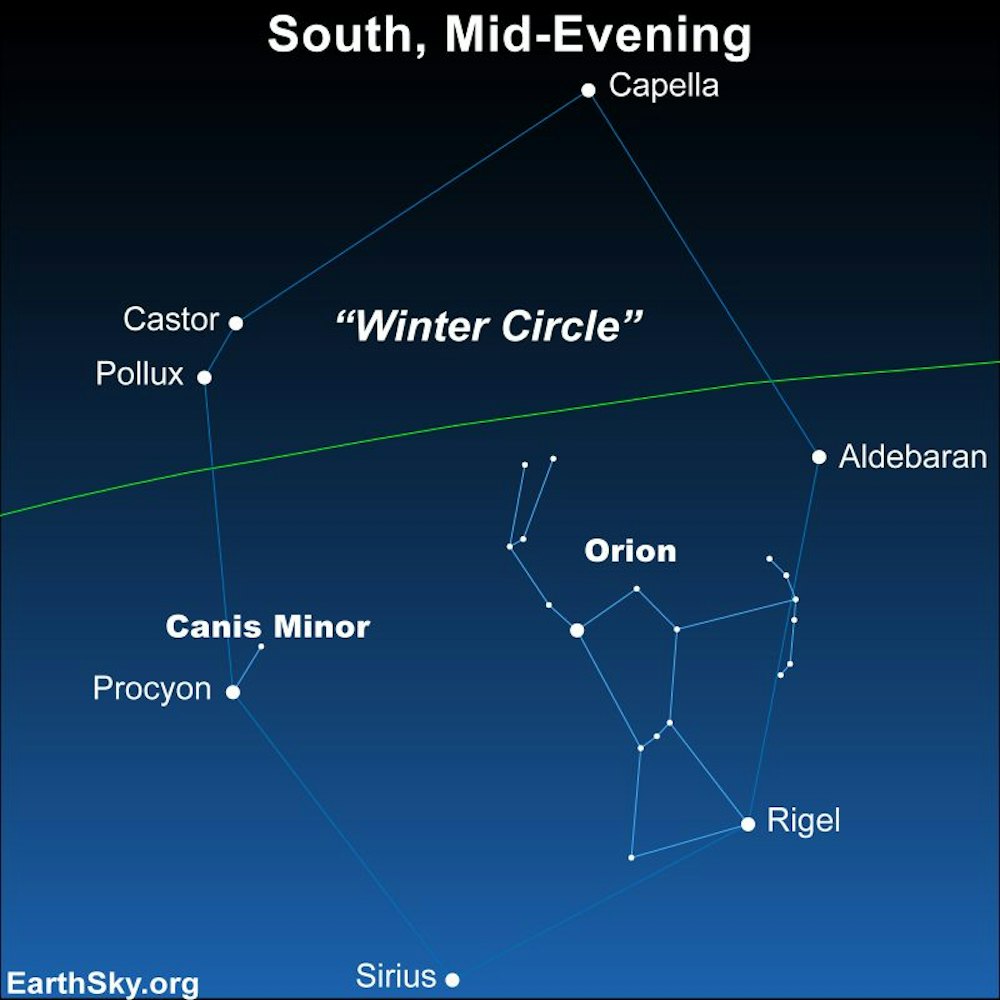The easiest way to locate the Winter Circle/Hexagon is to start by finding the three-star belt of Orion the Hunter. Above this array, Betelgeuse roughly centers the asterism. Looking slightly to the right, below the belt, Rigel marks the first star in the outer ring of the asterism. Then, looking slightly southwest, Sirius, the Dog star of Canis Major, the bottom of the circle, shines brilliantly. Next, scanning upwards to the northwest, Procyon, in Canis Minor, arrives in view to anchor the lower left half of the circle/hexagon. Continuing upwards, the Twins (Pollux and Castor) of Gemini complete the left half of the asterism. From there, looking to the northeast, the top of the asterism, Capella in Auriga the Charioteer, appears. Finally, by dropping one’s eyes down to the southeast, the final member of the asterism and the brightest star within Taurus, the Bull, Aldebaran, can be found to complete the Winter Circle/Hexagon. At this time of year, the asterism will become visible above the northeastern horizon at about 7 p.m., and most of it will remain above the western horizon at dawn. Then, in late February and early March, the Winter Circle is in your southern sky at nightfall and early evening.Winter Circle/Hexagon
 The Winter Circle (or Hexagon) is an asterism, a prominent group of stars with a noticeable pattern. In this case, the asterism is big and composed of 1st-magnitude stars – the brightest stars in our sky – found within six different constellations.
The Winter Circle (or Hexagon) is an asterism, a prominent group of stars with a noticeable pattern. In this case, the asterism is big and composed of 1st-magnitude stars – the brightest stars in our sky – found within six different constellations.
Featured Articles

Storms Bring Heavy Rainfall and Local Disruptions →
December 22, 2025
Sierra County faces power outages and water issues amid heavy rainfall and storm warnings.
215 Animals Seized for Cruelty from Grass Valley Property →
December 22, 2025
Human Remains Found Near South Yuba Bridge in March Identified →
December 17, 2025
Transfer Station Burn Suspended After Community Concerns →
December 16, 2025
Sierra Hardware Plans Extensive Repairs After Flood Damage →
December 8, 2025
